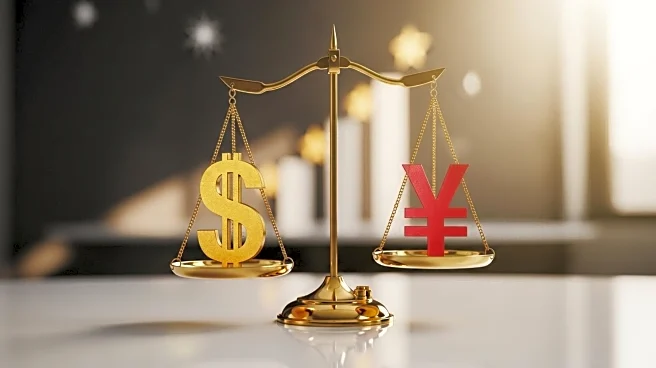What's Happening?
The United States and Japan have signed a memorandum of understanding (MOU) to establish a $550 billion investment fund aimed at facilitating large-scale investments in the U.S. This agreement coincides with a new executive order from President Trump, which outlines a phased reduction of U.S. tariffs on Japanese goods. The MOU includes provisions for reciprocal tariffs and investment opportunities, with a focus on sectors such as automotive, civil aircraft, and pharmaceuticals. The agreement is part of a broader strategy to enhance economic ties between the two nations.
Why It's Important?
The US-Japan trade agreement represents a significant development in international trade relations, potentially boosting economic activity in both countries. The reduction in tariffs could lower costs for U.S. consumers and businesses, while the investment fund may attract Japanese capital to U.S. infrastructure and technology projects. This agreement could also set a precedent for future trade negotiations, influencing global trade dynamics. However, unresolved issues and differing interpretations of the MOU's terms may pose challenges to its implementation, requiring careful monitoring by stakeholders.
What's Next?
As the agreement progresses, stakeholders should anticipate further clarifications on tariff rates and investment procedures. The U.S. and Japanese governments are expected to release additional details on the implementation of the MOU, including specific projects eligible for investment. Businesses involved in U.S.-Japan trade should prepare for potential changes in tariff classifications and compliance requirements. Ongoing negotiations may also lead to adjustments in the agreement, impacting sectors such as automotive and pharmaceuticals.













